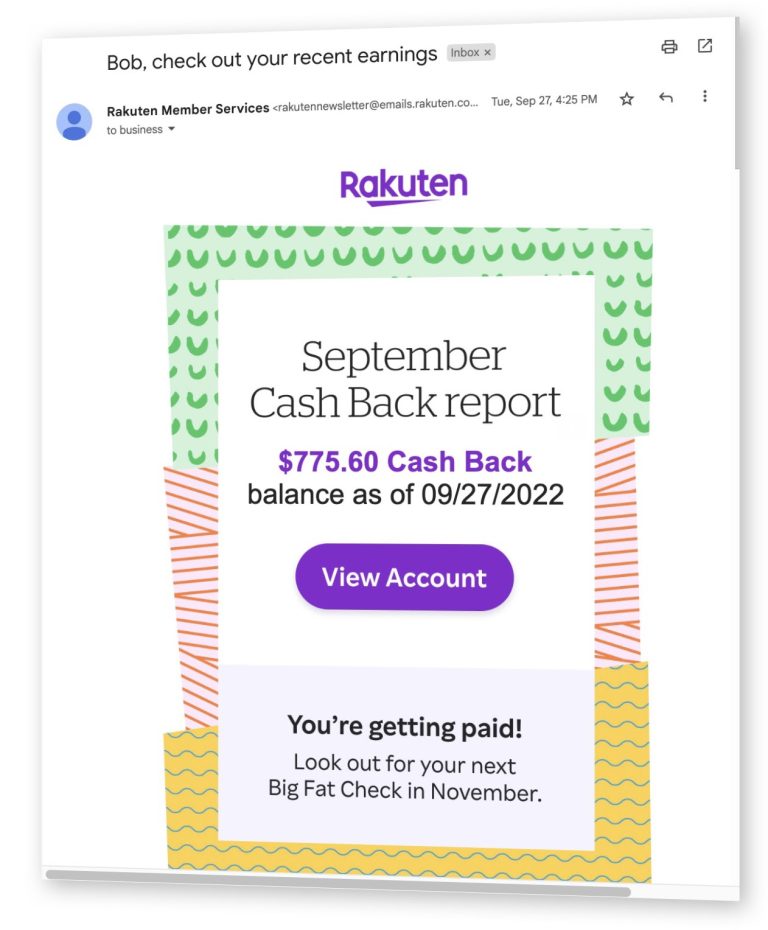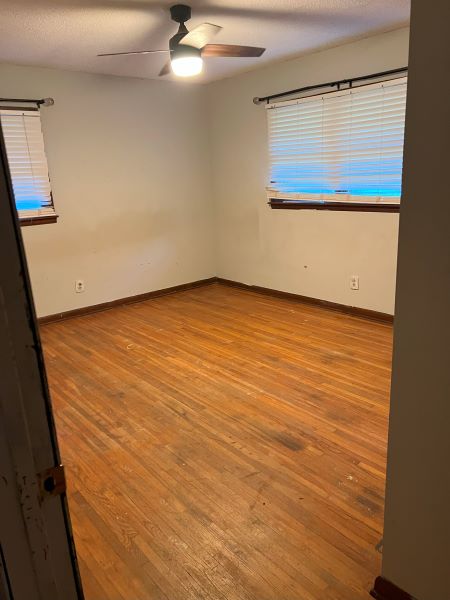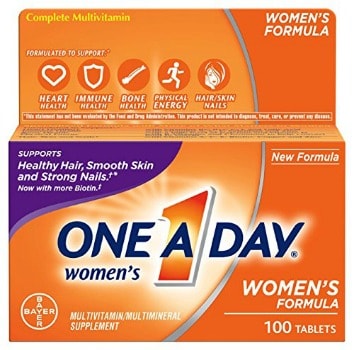
A lot of college packing lists seem like overkill. So what do you really need to bring? Photo: Nazareth College
Angela writes in:
In nine days, our oldest son is graduating from high school. He will be the first one in our family to go to college as he is going to [a major state school]. While we have spent a lot of time figuring out scholarships and financial aid and other things, we are really unsure as to what he needs to actually take to college. There are a lot of “lists of stuff to take to college” but they seem like overkill. You would need a moving van to take all of that stuff! He is going to live in the dorms for at least the first two years and will have a full meal plan. What should he take to college with him?
I loved this question because it’s almost exactly what my parents would have asked when I was about to graduate from high school. The situation is pretty much exactly the same.
I was the first person in my family to go to college. In fact, I didn’t know anyone very well who had actually gone to college.
We already had the finances figured out when I graduated. I had adequate scholarships and financial aid so that we weren’t worried about the cost of tuition, room, and board.
We had little idea what we would actually need because of that lack of experience. It was all a big stab in the dark.
However, we had a lot of suggestions for what to take, both provided by my college and by my guidance counselor. However, they seemed to be full of unnecessary stuff (but we weren’t sure which items were actually unnecessary).
I was planning on living in the dorms for at least two years and using the meal plan while living there.
In other words, I was in almost exactly the same boat that Angela’s son finds himself in. He’s on the precipice of a new experience, both for him and for his family.
Looking back, I ended up taking a lot of irrelevant stuff to college with me. Not only did that stuff take up space, it also cost a fair amount of money. It also turned out that I didn’t need most of it.
Less Is More
Here are a few quick realities about my college experience.
One, my dorm room was pretty small. I didn’t have a whole lot of room in there. On top of that, I had a roommate as well, which made it even tighter.
Two, I didn’t actually spend much time in my dorm room. I did most of my studying at the campus library, which was more conducive to studying and focusing. When I wasn’t studying or in class, I was either checking out campus group meetings or hanging out with friends. I was mostly just in my dorm room to keep clean and to sleep.
Three, I literally did not use a lot of the stuff that I brought. Things like my mini-fridge and the board games in my closet or my television were rarely used.
Four, some of the stuff we took turned out to be redundant when we got there. My dorm room already had a desk and a chair in there – it wasn’t 100{6fac3e6a3582a964f494389deded51e5db8d7156c3a7415ff659d1ae7a1be33e} clear from the information the college gave us. It also had a bed frame available (though no mattress). My dorm floor had a microwave available for everyone to use, so I didn’t need one.
All of that stuff points straight toward taking less stuff, not more.
Why Do the Lists Have So Much Stuff on Them?
If that’s the case, then why do the lists have so much stuff on them? If you don’t really need much stuff and it’s so much better to go minimal, what’s up with the 100-item “stuff you need for college” lists? There are a few reasons.
First, many lists are focusing on completeness. They’re trying to cover everything you might want in every possible dormitory or college living situation. Of course, you’re only going to have one specific situation, so you don’t need everything. In fact, most of the stuff on that long list is going to be completely redundant for you.
Second, some of those lists are published by companies or organizations that want to sell you a lot of that stuff. If a retailer is giving you a checklist of stuff you need, you better believe it’s going to have every possible thing on there so that they can sell you more stuff.
Third, some of the lists are written by people who don’t think about frugality at all. Sure, you might want a lot of stuff if money really isn’t an object at all. Those people probably also have giant dorm rooms. For me, though, money is an object, as is space. I didn’t have a rich family and I certainly didn’t have a dorm room to myself (it was a pretty small dorm room and I had a roommate).
So, this leaves us with the big question. What do you actually need? My recommended list is actually really short.
A Sturdy Duffel Bag
A sturdy duffel bag serves a lot of simultaneous purposes. It can help you ferry clothes and other key items easily from home to dormitory and back. It can also help you ferry a bunch of clothes to the washing machines and back when you need to get them clean. I’ve also used my large duffel for carrying other things – blankets, pillows, and so on.
I really, really recommend getting a sturdy one. A sturdy duffel bag will last through college and well into adult life, whereas a cheap one will rip out the bottom when it’s overstuffed at some poorly timed moment during your sophomore year.
If you want a specific recommendation, I strongly recommend the duffels from Best American Duffel. For this purpose, I’d choose the size 5 or size 8 duffel from their offerings. I own a size 5 and the thing is practically indestructible. I’ve used it to haul large quantities of laundry and many other items. I love the thing.
Another option is to get a large secondhand duffel. You can sometimes find a large duffel at an army surplus store at a really great rate, for example, and they occasionally pop up at general secondhand stores.
A Sturdy Backpack
However, a sturdy big duffel bag isn’t really going to help when it comes to taking things to and from classes. You aren’t going to want to carry it a mile and a half to the other side of campus. Thus, I also recommend a sturdy backpack.
My recommendation for a backpack is again along the lines of “sturdy and reliable so that it will last through college and beyond.” I’d recommend the North Face Surge 2 backpack. I’ve been using this backpack for a few years now on a very regular basis and it still looks new. A friend of mine has a similar model and has been using it for more than a decade (I’m not sure it’s the same one, but it’s very similar) and while it doesn’t look new any more, it looks really good.
It offers more than enough space to carry a laptop, a few notebooks, and a textbook or two without skipping a beat, and offers side pockets for things like pens and drinks. It’s far better than the bag I used in college.
Also, as with the duffel bag, if you can find a sturdy-looking used option, go for that instead. Sometimes, you can find a great used backpack for a very low price.
Clothes, Bed Coverings, Towels/Washcloths, and Toiletries
Honestly, everything that I would take to college with me, if I were to start over again, would fill up the duffel bag and the backpack. The duffel bag would be full of clothes, bed coverings, and toiletries. The backpack would be full of other items (discussed below).
I won’t speak to the specifics of clothes other than to say that I would expect to take enough clothes to cover a week of casual wear and perhaps two additional sets of “nicer” clothes (for presentations and such). Different people are going to have different opinions on clothes. My only recommendation is to not take too many clothes unless you’re really responsible with keeping up with the laundry, or else it becomes overwhelming.
For toiletries, take whatever you need in a mesh bag. Why a mesh bag? If you have a community shower room (as is common in many dormitories), you’ll have to take your toiletries back and forth with you, and a mesh bag is just more flexible than a “caddy” for this purpose. The mesh bag, of course, is unnecessary if you happen to have your own bathroom.
What kind of toiletries and household products do you need to take? Obviously, you’ll want everything you use in the bathroom – toothbrush, toothpaste, soap, shampoo, conditioner, towels, washcloths, and so on. You’ll also want some laundry detergent and softener because you’ll inevitably do some laundry.
A Laptop
At this point, I would consider a laptop an essential piece of equipment for college. The vast majority of classes require extensive Internet access and most college campuses have Wi-Fi everywhere for students.
The thing to remember is that unless you’re majoring in graphic design or computer science, your computer needs are relatively minimal. You need to be able to write papers on it and check websites, so you don’t need a really powerful laptop for this.
Thankfully, you can get a solid entry-level laptop these days for $500. The Lenovo ThinkPad is a great budget laptop line – here’s an example. If you’re really budget-conscious, I’d actually point you toward a Chromebook. This Acer Chromebook will do everything you need to do in college for $239 – the only thing it lacks is a ton of on-board storage for media.
Honestly, most secondhand laptops will do the trick. You can find reliable refurbished laptops at many electronics stores. Look for one that offers at least some sort of guarantee as to the reliability of the refurbished model.
Notebooks, Pens, and Pencils
These are the tools of the trade for taking notes and doing at least some assignments in college, just as in high school. You’re almost guaranteed to need them and to use them.
Notebook needs vary a lot from student to student. Personally, I found the most success with single-subject notebooks for each class and in the rare occasion where I filled one up, I just picked up a second one. They’re inexpensive and can be found everywhere.
I found that strong durability wasn’t that necessary for most notebooks as I carried them in my backpack and left them on a shelf in my dorm room – they didn’t really get too beat up. I do like reliability in my pocket notebooks, but you’ll likely not be using pocket notebooks. So, just get cheap single-subject notebooks – one for each class you’re taking – and roll with them.
As for pens, I’m quite happy to spend a little more on pens that work really well. I swear by Uniball 207 Ultra Micro black ink pens, which cost about $0.80 to $1 apiece or so if you buy them in bulk. I have used nothing but these pens for years, and I still take a lot of notes when brainstorming and researching for The Simple Dollar.
These pens don’t fail until they run out of ink. They don’t leak. They write smoothly. I love them. Sure, you can get cheaper pens, but those cheaper pens fail fairly regularly, can leave ink blots where you write, leak, won’t write sometimes when you want them to, and so on. For maybe $0.50 more, you get a pen that just doesn’t fail – and it’ll probably last a lot longer, too.
I find that pens work better for note-taking because you’re generally not erasing and changing things while you’re taking notes. You just cross off anything that’s completely false and keep writing because you’ve got to keep up. They’re also more legible for re-reading than pencils are, as pencils can smudge over time.
For math problems and calculations, however, pencils tend to work better. There are some differences in pencil quality, but the difference for most people isn’t enough to expend a lot of money. Just get a box of inexpensive pencils and you’ll be good to go.
Textbooks?
Sometimes, a textbook is vital for a class. Without the textbook, you’ll have no idea what’s going on. At other times, a textbook is useless for a class and everything relies on the notes given by the teacher. I’ve taken classes with recommended textbooks and literally everything is online, and I’ve taken other classes that basically didn’t make any sense without the textbook.
The problem is that you don’t know this in advance. You have no idea which kind of class you’re taking just from looking at the syllabus online or even during the first period or two of class.
So, what I suggest is putting aside some money for textbooks, but not buying any at the start of the year. Go to your classes and figure out whether the textbook is useful. Is there any material that comes solely from the reading, or is the material from the class completely derived from lectures and online notes?
Most (but not all) professors are aware that textbooks are a financial burden on many families and students. There are a lot of classes you’ll take where a professor will suggest a textbook, but won’t necessarily require it at all. Don’t buy it unless it actually fulfills a need for you. If you do need to buy the book, try an app like Chegg to save money on the textbooks you do buy.
A Cell Phone
A modern cell phone can serve a lot of purposes in the college setting. It can function simultaneously as a phone, a planner, a communication device, an alarm clock, a quick research tool, an address book, and many other things that people might have bought separately in the past.
I’d suggest a cell phone for most college students. You don’t have to get an expensive high-end phone and you don’t need a big data plan for it (since Wi-Fi is everywhere on most campuses), but a smartphone that can fill all of those functions is perfect.
A good strategy here is to go with a discount provider like Ting. They offer lower-end smartphones for a very reasonable price as well as extremely cheap data and voice plans that are often the same service offered by other carriers with the Ting name tacked on.
Parents can take on the bills for this, of course, but it’s easy for an independent phone to easily be transferred to the child once they have an income source.
What About…
There are some items that may or may not come with your dorm room. You’ll have to check with your specific college. You’re going to want a bed of some kind and perhaps a desk with a chair. I personally barely ever used the desk and chair in my room, as I usually just camped out on my bed with a lap desk as it was more comfortable. I also used my bed as a “couch” for relaxing occasionally in my dorm room (usually when I was reading a book or something).
Some dormitories will provide you with those items. Some won’t. You’ll have to check with your school regarding what’s already in your room before you arrive.
Buy Later, If You Find You Need It
My final overall suggestion is to just go minimal. Don’t buy stuff because you think you might need it. Instead, buy only the things you know that you will need, then buy more items later on if you find that you do need them.
So, instead of just buying a bunch of stuff and taking it with you, keep some cash back to buy stuff later. The exact arrangement for doing this depends a lot on your relationship with your child. You may want to give them some cash or a credit card with the understanding that they’ll use it for things they need. You may want to keep the money yourself and have a discussion about such purchases before they’re made. Some patterns work well for some families, and different patterns work better for different families.
Yes, undoubtedly, you’re going to find more things that your child needs once you arrive, and also after you leave and your child is on his or her own for the first time.
That’s okay. That in itself is a learning experience, and it’s a far more valuable one than just having piles of stuff that won’t be used.
Final Thoughts
One of my clearest memories of the first few days of college was how different people were bringing drastically different amounts of stuff. I was probably on the upper end of that spectrum, but I wasn’t at the top of the pack – a couple of people on my dorm floor brought mountains of stuff. Other people basically brought two bags with them.
Looking back, the “two-bag” approach was clearly the stronger one. It caused the students to focus on what they actually needed, it saved both the students and the parents a lot of money, and it saved a lot of time for them, too.
More than anything, it freed those students to focus on the college experience rather than a lot of stuff, and that’s the best part of college: the experience.
Go minimal. Sure, you might find you need another thing or two – buy them later. Don’t overload at the start. Let the needs come to you.
The post What to Bring to College: The Smart (and Frugal) College Checklist appeared first on The Simple Dollar.
SOURCE: The Simple Dollar The Simple Dollar – Read entire story here.




















